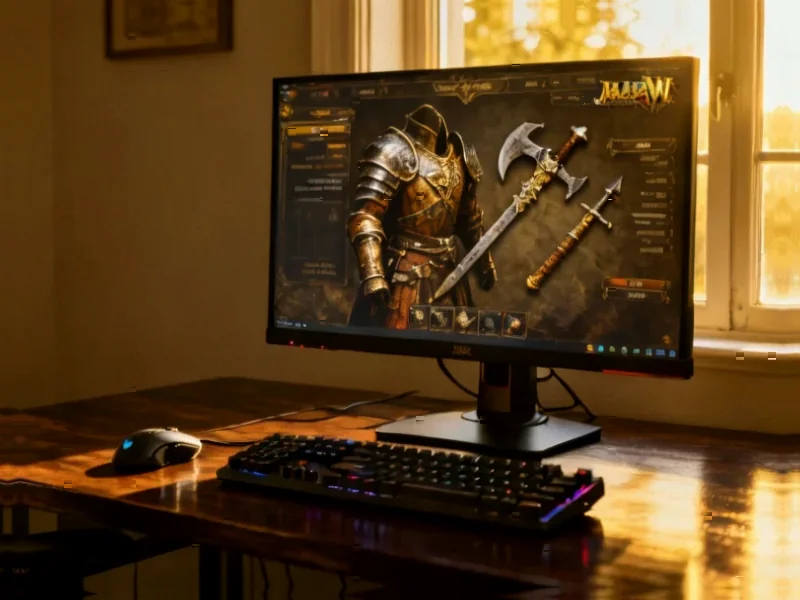According to Kotaku, Obsidian Entertainment will begin testing a turn-based combat mode for the PC version of Pillars of Eternity on November 5, with plans to implement it in a future patch. Game director Josh Sawyer described the addition as a “big undertaking” in a video blog announcing the update, noting it was inspired by the positive reception to turn-based combat in Pillars of Eternity II: Deadfire back in 2019. The studio is addressing previous fan criticisms by increasing lethality to prevent combat from feeling slow and considering a HUD toggle for switching combat modes on the fly. Fans have responded enthusiastically to the news, with some already demanding a sequel and suggesting Sawyer receive “the budget of BG3” for the next Pillars game. This strategic update comes as Obsidian continues expanding the Eora universe, most recently with the upcoming 2025 release of Avowed.
The Real-Time vs Turn-Based Design Dilemma
This move represents a fascinating evolution in RPG design philosophy that speaks to broader industry trends. Pillars of Eternity originally positioned itself as a spiritual successor to classic isometric RPGs like Baldur’s Gate and Icewind Dale, which predominantly used real-time with pause systems. However, the massive success of games like Divinity: Original Sin 2 and Baldur’s Gate 3 has demonstrated that modern audiences increasingly prefer the tactical depth and accessibility of turn-based systems. What’s particularly interesting is that Obsidian isn’t simply replacing one system with another—they’re offering both, acknowledging that different players engage with RPG combat in fundamentally different ways. This dual-system approach could become a new standard for the genre, allowing developers to cater to both nostalgia-driven players and those who discovered RPGs through more modern turn-based titles.
Strategic Franchise Positioning Ahead of Avowed
The timing of this update is strategically significant as Obsidian prepares to launch Avowed in 2025. By refreshing the original Pillars of Eternity with modern combat options, the studio is effectively creating an onboarding ramp for new players who might discover the Eora universe through Avowed’s first-person action-RPG format. This represents a sophisticated approach to franchise management that recognizes how different entry points can serve complementary purposes within an expanding game universe. The turn-based mode makes the original game more accessible to players who prefer tactical combat, while Avowed will attract action-RPG enthusiasts—effectively casting a wider net for the franchise as a whole. This multi-format strategy could help Obsidian build the kind of broad fanbase that justifies larger budgets for future installments.
The Technical and Design Challenges
Retrofitting turn-based combat into a game originally designed around real-time with pause systems presents substantial technical challenges that Sawyer’s description of the project as a “big undertaking” likely understates. The entire combat balance, enemy AI, ability timing, and encounter design must be reworked from the ground up. Increasing lethality to maintain pacing is a smart solution, but it requires careful calibration to preserve the game’s strategic depth while preventing combat from becoming either trivial or frustrating. The proposed HUD toggle for switching between modes mid-game is particularly ambitious—it essentially requires maintaining two completely different combat systems simultaneously, each with their own balance and mechanics. If executed well, this could set a new benchmark for combat flexibility in RPGs.
Broader Market Implications for Classic RPGs
This update demonstrates how developers can extend the lifespan of older titles by adapting them to contemporary player preferences. For other studios with classic RPGs in their catalog, Obsidian’s approach offers a compelling blueprint for revitalizing older properties without requiring full remakes or sequels. The enthusiastic fan response and immediate calls for a sequel suggest that such updates can effectively gauge interest and build momentum for future projects. However, this strategy also raises questions about resource allocation—whether studios should invest in updating older titles or focus those resources on new development. In Obsidian’s case, with Microsoft’s backing and multiple projects in development, this appears to be a calculated investment in franchise health rather than a zero-sum decision.
The Path Forward for Pillars of Eternity
The fan demand for a sequel following this announcement reveals pent-up enthusiasm for the franchise that extends beyond nostalgia for its original real-time with pause mechanics. The reference to Baldur’s Gate 3’s budget in fan comments highlights how audience expectations have evolved—players now expect cinematic presentation, extensive voice acting, and production values that match the genre’s current leaders. If Obsidian does pursue a third Pillars game, the success of this turn-based implementation will likely inform its combat design. More importantly, the positive reception to this update suggests there’s substantial appetite for both traditional isometric RPGs and the franchise’s expansion into new genres like Avowed’s first-person action-RPG format, potentially creating multiple viable paths for the franchise’s future growth.




